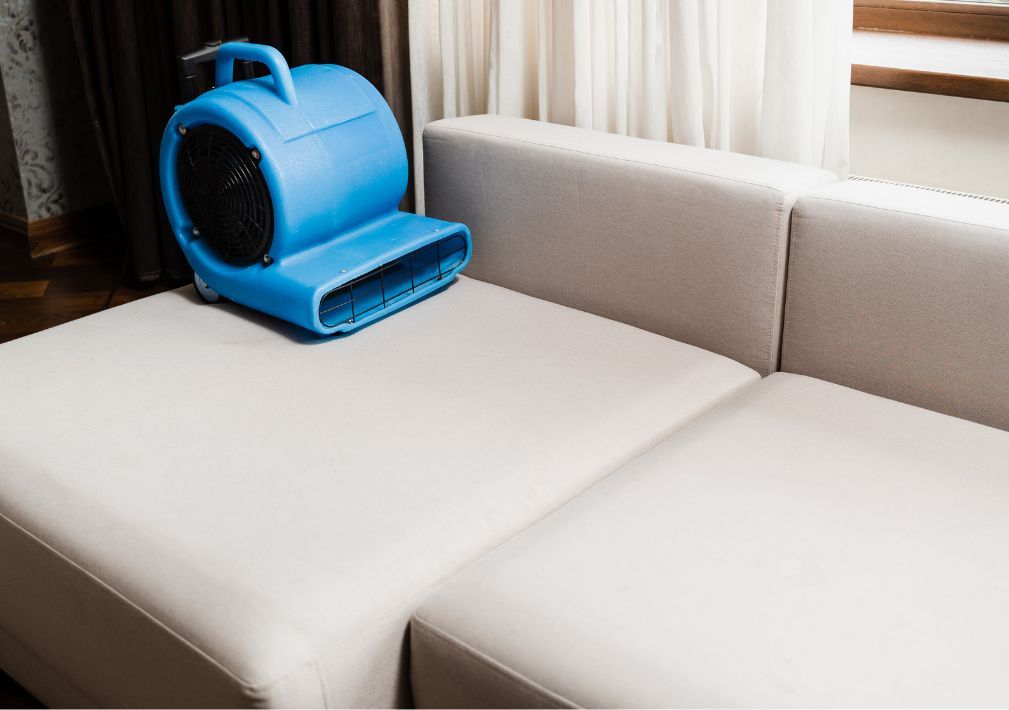What Is The Average Cost Of Water Damage Restoration In Avinger, TX?

Table of Contents
- 1. Factors That Affect Water Damage Restoration Costs
- 2. Cost Breakdown of Water Damage Restoration
- 3. Signs You Need Water Damage Restoration
- 4. How to Reduce Water Damage Restoration Costs
- 5. Common Misconceptions About Water Damage Restoration Costs
- 6. Why Delaying Water Damage Restoration Can Increase Costs
- 7. What to Expect During the Water Damage Restoration Process
- 8. Voda Cleaning & Restoration Provides Expert Water Damage Restoration Near You
- 9. Frequently Asked Questions About Water Restoration Costs
The average cost of water damage restoration in Avinger, TX, ranges between $1,200 and $5,000, depending on the severity of the damage and the type of restoration required. Factors like the extent of water infiltration, materials affected, and the need for mold remediation all influence the final price.
Factors That Affect Water Damage Restoration Costs
Several elements impact the total cost of water damage restoration in Avinger, TX. Here are the key factors:
- Extent of Damage: Minor leaks cost less than severe flooding. The level of saturation and how deep the water has penetrated surfaces plays a major role.
- Type of Water Involved: Clean water is cheaper to clean than gray or black water. Black water, which contains sewage and bacteria, requires additional sanitation and specialized handling.
- Size of Affected Area: Larger spaces require more labor and materials, making it more expensive to restore an entire basement compared to a small bathroom.
- Materials Affected: Hardwood floors, drywall, carpets, and furniture all require different restoration approaches and costs. Some materials, like drywall, may need full replacement, while hardwood floors can often be dried and restored.
- Mold Growth: If mold remediation is required, expect additional charges. Mold can spread quickly, causing further damage and health risks, making early intervention critical.
- Emergency Services: Immediate response services often come at a premium, especially if restoration is needed during off-hours or on weekends.
- Structural Repairs: Severe water damage can compromise structural integrity, requiring costly repairs to walls, ceilings, and flooring.
Voda Cleaning & Restoration of Tyler Longview provides a detailed inspection to assess these factors before offering a transparent estimate.
Cost Breakdown of Water Damage Restoration
A closer look at the cost breakdown:
- Water Extraction: $500 – $1,500, depending on the volume of water removed. Using industrial pumps speeds up the process and reduces long-term damage.
- Drying & Dehumidification: $1,000 – $3,000, depending on the size of the area and moisture levels. Professional-grade dehumidifiers and air movers are used to prevent further damage and mold growth.
- Structural Repairs: $500 – $7,000+, including drywall replacement, floor repairs, and ceiling restoration. Costs rise if foundational damage is present.
- Mold Remediation: $1,000 – $6,000 (if required). Mold testing, removal, and prevention methods are used to ensure a safe living environment.
- Sanitization and Deodorization: $300 – $1,500. Odors caused by water damage, especially from sewage backups, require professional deodorization techniques.
- Carpet and Upholstery Cleaning: $100 – $1,000. Water-damaged carpets and furniture may need deep cleaning or full replacement.
While costs vary, Voda Cleaning & Restoration of Tyler Longview offers competitive pricing and expert service.
Signs You Need Water Damage Restoration
Ignoring water damage can lead to costly repairs. Look for these signs:
- Warped flooring or walls indicating prolonged water exposure.
- Musty odors suggest hidden moisture or mold growth.
- Mold growth can spread quickly and cause health issues.
- Stains on walls or ceilings may signal ongoing leaks.
- Increased humidity indoors can contribute to further deterioration.
- Bubbling or peeling paint is often a sign of water trapped behind walls.
- Soft or sagging drywall indicating severe water saturation.
- Higher water bills can signal hidden leaks.
If you notice any of these signs, contact Voda Cleaning & Restoration of Tyler Longview for prompt service.
How to Reduce Water Damage Restoration Costs
Here are some proactive steps to minimize costs:
- Act Quickly: The longer water sits, the more extensive the damage and cost.
- Turn Off the Water Source: If possible, shut off the main water supply to prevent further leakage.
- Use Fans and Dehumidifiers: Start the drying process immediately to prevent mold growth.
- Move Belongings to a Dry Area: Remove furniture, electronics, and valuables from the affected space.
- Address Leaks Early: Routine plumbing maintenance can prevent severe water damage.
- Ensure Proper Drainage Around Your Home: Keep gutters clean and direct water away from the foundation.
For fast and professional restoration, trust Voda Cleaning & Restoration of Tyler Longview.
Common Misconceptions About Water Damage Restoration Costs
Many homeowners assume that water damage restoration is always covered by insurance or that all water damage is the same. However, the cost and coverage can vary based on the source of water, policy exclusions, and the extent of damage. Understanding these differences can help you avoid unexpected expenses.
Another common misconception is that DIY solutions can replace professional restoration. Hidden moisture and improper drying can lead to mold growth and structural damage. Additionally, some homeowners assume all restoration companies offer the same services at the same prices, but expertise, equipment, and response times can vary significantly.
Why Delaying Water Damage Restoration Can Increase Costs
Delaying restoration allows water to seep deeper into building materials, leading to structural damage, mold growth, and higher repair costs. Immediate action can prevent secondary damage and reduce overall restoration expenses.
As time progresses, materials like drywall and wood begin to break down, weakening the home’s foundation. Mold can spread rapidly, making remediation more complex and expensive. The longer water remains, the higher the risk of contamination, especially if gray or black water is involved. Furthermore, insurance claims may be denied if the insurer determines negligence due to delayed action.
What to Expect During the Water Damage Restoration Process
Water damage restoration typically involves inspection, water extraction, drying, sanitization, and repairs. Knowing what to expect can help homeowners prepare for the process and work efficiently with professionals.
During the inspection phase, specialists assess the severity of the damage and create a restoration plan. Water extraction involves removing standing water using industrial pumps. The drying process utilizes air movers and dehumidifiers to eliminate excess moisture. Sanitization prevents bacteria and mold growth, ensuring a safe living environment. Finally, repairs and reconstruction are completed, restoring the home to its pre-damage condition. Communication with restoration experts throughout the process helps homeowners understand timelines and potential costs.
Voda Cleaning & Restoration Provides Expert Water Damage Restoration Near You
Water damage can be overwhelming, but you don’t have to handle it alone. Voda Cleaning & Restoration of Tyler Longview offers professional, reliable, and cost-effective restoration services in Avinger, TX. Contact us today for a free estimate and restore your home with confidence!
Frequently Asked Questions About Water Restoration Costs
What is the most expensive part of water damage restoration?
The most expensive aspect of water damage restoration is often structural repairs, especially if walls, ceilings, or flooring need replacement. Mold remediation and extensive drying processes can also add to costs.
How do I know if my water damage is covered by insurance?
Insurance policies differ, but damage from sudden incidents like burst pipes is usually covered, while gradual leaks or flood damage may not be. Reviewing your policy and consulting your insurance provider can clarify coverage details. Contact us to know more.
What happens if water damage is left untreated?
According to experts like Voda Cleaning & Restoration of Tyler Longview, untreated water damage can lead to mold growth, wood rot, structural weakening, and health issues. It can also cause electrical hazards if water seeps into wiring.
More Blogs
Categories




